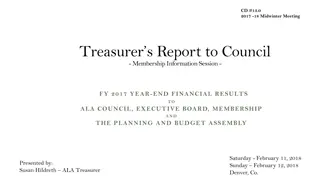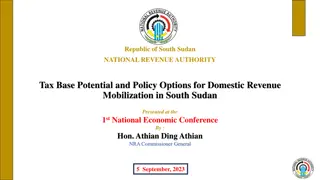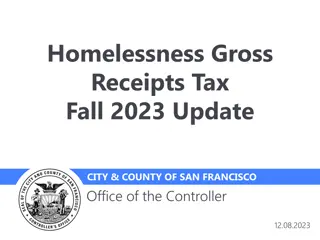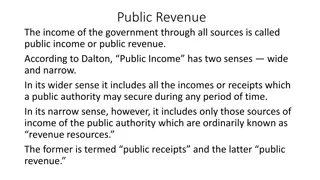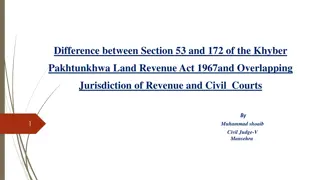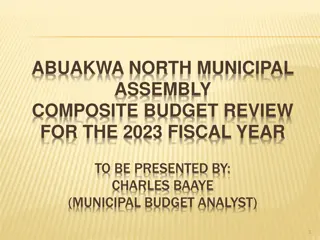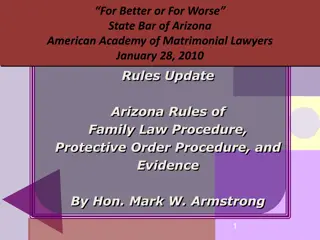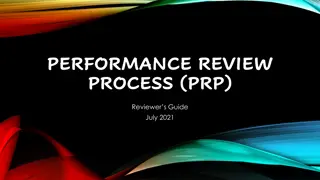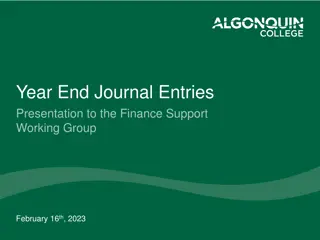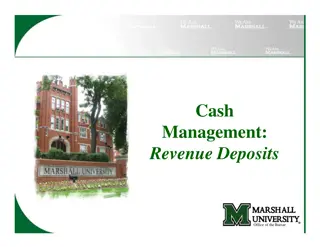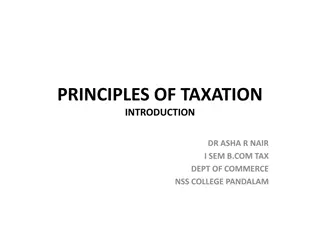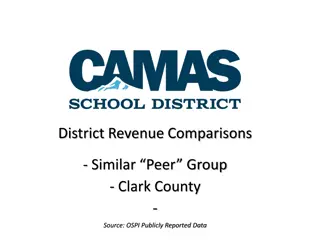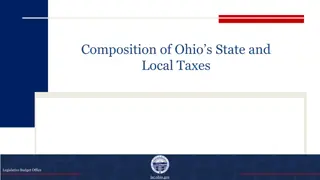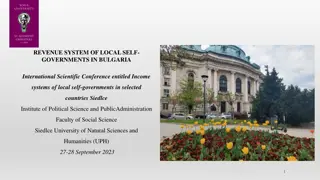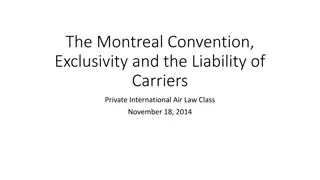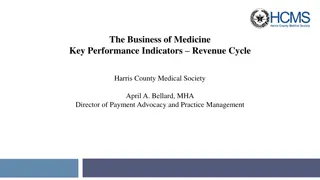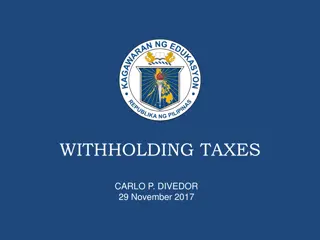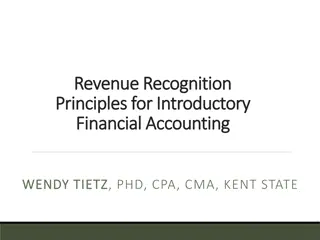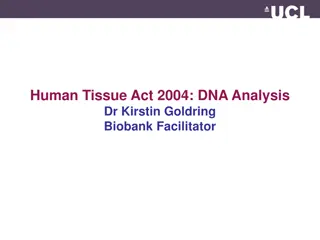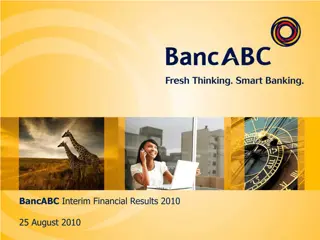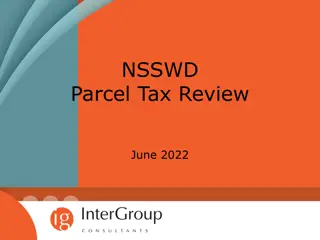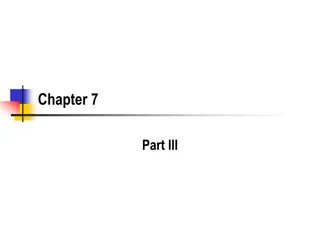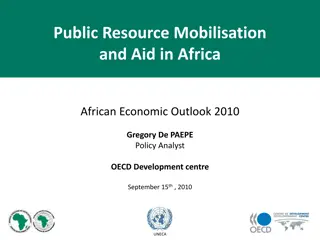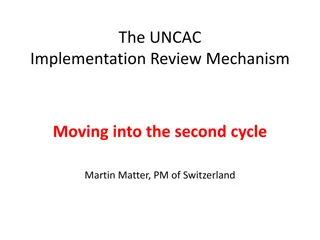Review of Revenue Performance under RVAT Law 2004-2010
This study focuses on evaluating the revenue performance of the Reformed Value Added Tax (RVAT) Law from 2004 to 2010 in the Philippines. It analyzes various aspects such as salient features, VAT revenue share, deficiency ratio, impact on the economy, and more to formulate strategic policies based on the findings.
Download Presentation

Please find below an Image/Link to download the presentation.
The content on the website is provided AS IS for your information and personal use only. It may not be sold, licensed, or shared on other websites without obtaining consent from the author. Download presentation by click this link. If you encounter any issues during the download, it is possible that the publisher has removed the file from their server.
E N D
Presentation Transcript
COMPARATIVE ASIA AFRICA GOVERNMENTAL ACCOUNTING (CAAGA) CONFERENCE 2016 MERCU BUANA UNIVERSITY JAKARTA, INDONESIA
REVENUE PERFORMANCE OF REPUBLIC ACT (RA) NO. 9337, OTHERWISE KNOWN AS THE REFORMED VALUE ADDED TAX (RVAT) LAW, 2004-2010 AS A BASIS TO A STRATEGIC POLICY FORMULATION REVELINO D GARCIA PH.D.* *FACULTY, GRADUATE SCHOOL OF BUSINESS, DE LA SALLE UNIVERSITY-DASMARINAS *INVESTMENT MANAGER, MAPSA MANILA *DIRECTOR OF INTERNATIONAL RELATIONS, DAEHAN SOCIETY OF INDUSTRIAL MANAGEMENT
OBJECTIVE OF THE PAPER The study is designed to review the Revenue Performance of Republic Act (RA) No. 9337, otherwise known as the Reformed Value Added Tax (RVAT) Law, 2004-2010 as a basis to a Strategic Policy Formulation.
Paper focus: * salient features, * revenue performance 2004-2010, * share of VAT Revenue to Total Revenue, VAT Deficiency Ratio, VAT and Import Efficiency Ratio, * Impact of the RVAT Law to the economy, * NG Debt * Expenditure and Surplus/(Deficit), * Share of LGUs from VAT.
Philippine President Gloria Macapagal- Arroyo signed the E-VAT bill in May 2005 and passed by the Philippine Congress in the same month, and implemented on Nov. 1, 2005
WHY RVAT To meet the budget deficit levels set by the IMF. President Fidel Ramos enacted the Republic Act 7716 (or the new expanded VAT law) in 1994 to restructure the value added tax, widen its scope and enhance its administration
Standard rate of 12 percent of the gross selling price or gross receipts. Provides for transactions subject to zero-percent rate or VAT exempt. VAT exempt transactions refer to sale of goods or properties and/or services not subject to VAT (output tax) and the seller is not allowed any tax credit of input VAT
Rationale of the Study Evaluate the revenue performance of the Reformed Value Added Tax, during the period 2004-2010 after its implementation in November 2005, to determine how RVAT been beneficial to the taxpayers
Objective of the Paper To review the Revenue Performance of Republic Act (RA) No. 9337, otherwise known as the Reformed Value Added Tax (RVAT) Law, 2004-2010 as a basis to a Strategic Policy Formulation
1 70% cap on input VAT The spreading of the input VAT claim on capital goods which exceeds Php1 million (net of VAT component) to 5 years
2 Removal of the 1.5% presumptive input VAT on public works contractors and services
3 Imposition of a uniform 5% final withholding VAT on government purchases of goods, services and public works contracts. These reform measures were enacted to strengthen the government s cash flow and to simplify the VAT administration as well
The regular income tax rate for both domestic and foreign corporations has been increased to 35%.
Claim for input tax on capital goods (whose acquisition cost, net of VAT, exceeds Php1.0 million) spread out evenly over 60- months or their useful life, whichever is shorter
Table 1 VAT REVENUES AND GROWTH RATES: 2004- 2010 (Amounts in Billion Pesos) Year BIR 2004 80.22 2005 87.86 2006 140.93 2007 145.01 2008 140.32 2009 168.29 2010 173.28 Sources of basic data: BIR and BOC. VAT Revenues Growth Rate (%) BOC Total BIR BOC Total 58.88 68.81 118.87 129.02 156.33 133.90 157.50 139.10 156.67 259.80 274.03 296.65 302.19 330.78 -2.92 9.52 60.40 2.90 -3.23 19.93 2.97 11.81 16.86 72.75 8.54 21.17 -14.35 17.63 2.81 12.63 65.83 5.48 8.25 1.87 9.46
Table 2 SHARE OF VAT REVENUE TO TOTAL TAX REVENUES: 2004-2010 (Amounts in Billion Pesos) Year Total VAT Revenues 139.01 156.67 259.80 274.03 296.65 302.19 330.78 Total Tax Revenues 598.01 705.62 859.87 932.93 1,049.19 981.62 1,093.64 % Share to Total 23.25 22.20 30.21 29.37 28.27 30.78 30.25 2004 2005 2006 2007 2008 2009 2010 Sources of Basic Data: BIR, BOC and BTr.
Table 3 VAT EFFICIENCY RATIO: 2004-2010 (Amounts in Billion Pesos) VAT GDP at Current Prices Consumption Expenditure Ratio of VAT to Revenue VAT Efficiency with Respect to Revenues, GDP Consumption Expenditure 28.55% 28.78% Year Revenues (BIR + BOC) GDP Consumption Expenditure 139.10 4,871.55 156.67 5,444.04 GDP 2004 2005 3,838.83 4,299.29 2.86% 2.88% 3.62% 3.64% 36.23% 36.44% 2006 2007 2008 2009 2010 Source of basic data: BIR, BOC, BTr and NSCB. 259.80 6,031.16 274.04 6,648.62 296.65 7,409.37 302.19 7,678.92 330.78 8,513.04 4,819.43 5,265.64 5,978.73 6,484.65 7.077.14 4.31% 4.12% 4.00% 3.94% 3.89% 4.31% 5.20% 4.96% 4.66% 4.67% 35.90% 34.35% 33.36% 32.79% 32.38% 44.92% 43.37% 41.35% 38.83% 38.95%
Table 4 VAT ON IMPORTS EFFICIENCY RATIO: 2004-2010 (Amounts in Billion Pesos) VAT on Imports Total Imports Ratio of VAT on Imports to Total Imports (%) 3.59 3.99 6.50 6.67 5.24 5.61 5.39 VAT Year Efficiency Ratio (%) 35.94 39.86 54.20 55.62 43.63 46.74 44.94 2004 2005 2006 2007 2008 2009 2010 Sources of Basic Data: BOC and NSCB. 58.88 68.81 118.87 129.02 156.33 133.90 157.50 1,638.35 1,726.41 1,827.65 1,933.00 2,985.65 2,387.38 2,920.46
Table 5 VAT GROSS COMPLIANCE RATIO: 2004-2010 (Amounts in Billion Pesos) Year VAT Revenue (BIR + BOC) 139.10 156.67 259.80 274.04 296.65 302.19 330.78 Private Consumption 3,346.72 3,772.25 4,229.50 4,611.88 5,281.07 5,674.97 6,192.86 VAT Gross Compliance Ratio 41.56% 41.53% 51.19% 49.52% 46.81% 44.37% 44.51% 2004 2005 2006 2007 2008 2009 2010
Table 6 NG DEBT, EXPENDITURE AND SURPLUS/(DEFICIT): 2004-2010 (Amounts in Billion Pesos) Year NG Debt Surplus/ (Deficit) -187,057 -146,778 -64,791 -12,441 -68,117 -298,532 -314,458 NG debt to GDP 95.36% 82.19% 73.31% 63.12% 64.33% 65.25% 61.88% Surplus/(Defi cit) to GDP -3.84% -2.70% -1.07% -0.19% -0.92% -3.89% -3.69% 2004 2005 2006 2007 2008 2009 2010 Source of Basic Data: BTr 4,645.66 4,474.58 4,421.43 4,196.67 4,766.48 5,010.77 5,267.97
Table 7 SHARE OF LGUs FROM VAT, 2004-2010 (Amounts in Million Pesos) Year 2004 2005 2006 2007 2008 2009 2010 Share from VAT 12 38 66 380 110 183 64 Growth 0.00% 216.67% 73.68% 476.76% -71.05% 66.36% -65.03% Source of Basic Data: Local Government Audit Office Annual Report.
Overall, the RVAT regime in general is more efficient than pre-RVAT regime although it is still below the recorded average in Asia and the Pacific region (New Zealand as benchmark, 60%)
The highest efficiency ratio recorded in 2006 is due to the fact that the VAT coverage is at its broadest.
VAT-registered taxpayers rate increased from 10% to 12% and tax mapping was done
In 2007 onwards, the declining efficiency can be explained by the enactment of several measures exempting certain transactions from the coverage of VAT and the scrapping of the 70% cap on input VAT
The share of LGUs from the incremental VAT collections only accrues to the city or municipality where such taxes are collected and is allocated in accordance with the rule on the situs of the local business tax per Section 150 of the Local Government Code
The share of VAT to total tax revenue significantly increased from a 22% - 23% level to a range of 28% to 30%.
Broadened tax base, increased rate and the 70% cap on input VAT in 2005 has proven to be an effective revenue generating measure
Share of VAT revenue to total tax revenues VAT efficiency with respect to aggregate consumption or C-efficiency ratio, a similar pattern is observed during the period under review VAT efficiency ratio improved to almost 36% although it continuously declined over the years until it reached about 32% in 2010 (way below the New Zealand benchmark of 60%)
VAT efficiency ratio. The improvement in BOC VAT collections can be attributed to the various programs that the BOC has implemented. In addition, collecting VAT on imports is easier than on domestic transactions. There are also no input tax claims at the time of importations. The claims start to kick in only when the imported item is used to produce an output subject to the VAT
VAT on imports efficiency ratio. VATGCR went up to 51% in 2006 or after the full implementation of the RVAT as compared to 41.5% level in 2004 and 2005 or prior to RVAT. However, VATGCR deteriorated beginning 2007 until it settled to 44.5% in 2010 (due to stabilization of VAT collection)
VAT gross compliance ratio In 2007 onwards, the declining efficiency can be explained by the enactment of several measures exempting certain transactions from the coverage of VAT and the scrapping of the 70% cap on input VAT
Share of LGUs from VAT. The share of LGUs from the incremental VAT collections only accrues to the city or municipality where such taxes are collected and is allocated in accordance with the rule on the situs of the local business tax per Section 150 of the Local Government Code.
1 RA No. 9337 in 2005 significantly improved the VAT revenue in 2006 by almost two-thirds and registered moderate increases in succeeding years. Hence, R-VAT proved to have the ability to deliver the needed revenue to the government coffers and helped reduce its public debt and deficit
2 Improved efficiency of the VAT system although short-lived due to the passage of certain measures exempting certain transactions from the VAT
3 VAT revenues were used to finance governments programs on education, health, environmental conservation and agricultural modernization 4 A fund called Katas ng VAT was used to provide subsidy to qualified senior citizens and lifeline users of electricity which directly benefited the poor 5 Funded scholarships and loans to students, wives and relatives of transport workers, rehabilitation of areas damaged by typhoons and upgrading of provincial hospitals, among others 6 VAT revenue shares of LGUs augmented their resources to finance basic social services.
7 VAT prevented the cascading of tax burden as it occurs along the VAT chain. 8 VAT has a self-policing mechanism in the sense that it provides an audit trail for the government tax auditors to verify the accuracy of the output tax payments versus the input tax payments that may reduce the incidence of tax evasion.
Recommendation for Strategic Policy To sustain the revenue productivity of the VAT, the government should avoid proposals, which seek to expand the coverage of VAT exempt transactions as these break the VAT chain that leads to higher costs and prices, and revenue losses to the government.
THANK YOU MABUHAY!



